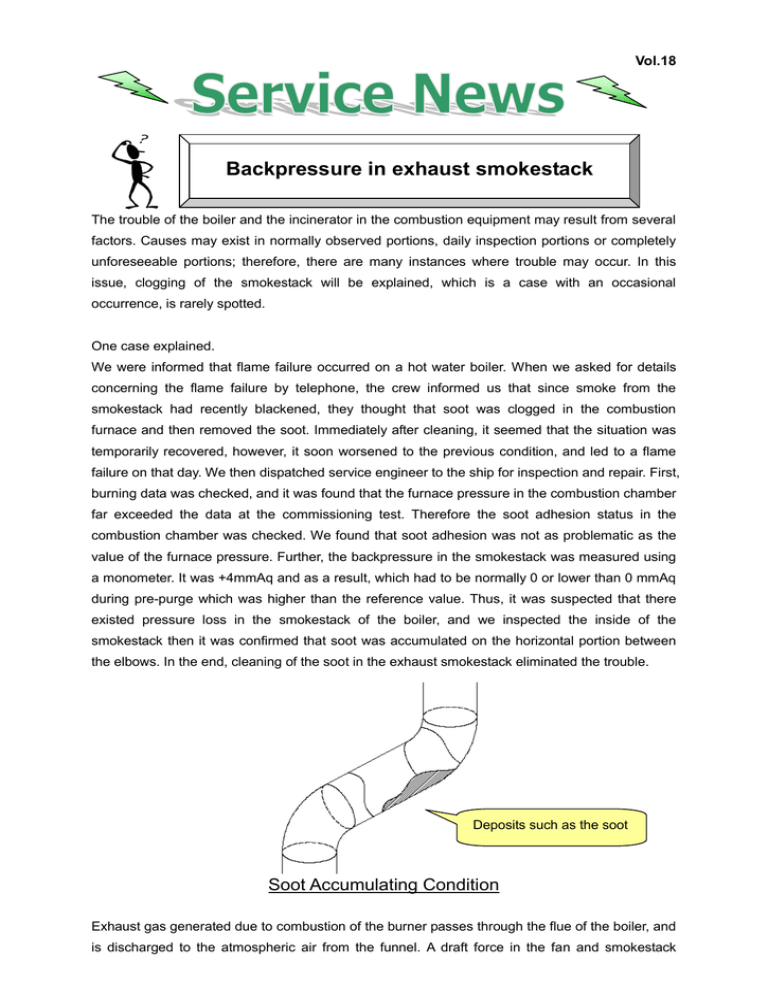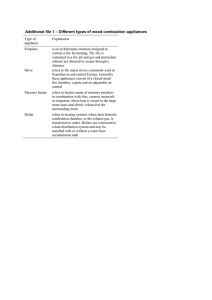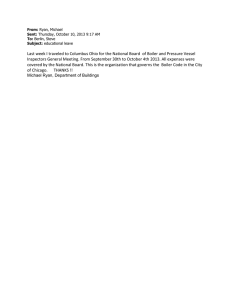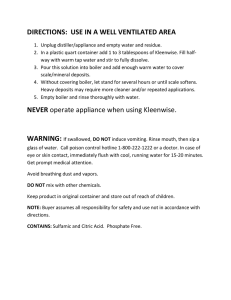
Vol.18
Backpressure in exhaust smokestack
The trouble of the boiler and the incinerator in the combustion equipment may result from several
factors. Causes may exist in normally observed portions, daily inspection portions or completely
unforeseeable portions; therefore, there are many instances where trouble may occur. In this
issue, clogging of the smokestack will be explained, which is a case with an occasional
occurrence, is rarely spotted.
One case explained.
We were informed that flame failure occurred on a hot water boiler. When we asked for details
concerning the flame failure by telephone, the crew informed us that since smoke from the
smokestack had recently blackened, they thought that soot was clogged in the combustion
furnace and then removed the soot. Immediately after cleaning, it seemed that the situation was
temporarily recovered, however, it soon worsened to the previous condition, and led to a flame
failure on that day. We then dispatched service engineer to the ship for inspection and repair. First,
burning data was checked, and it was found that the furnace pressure in the combustion chamber
far exceeded the data at the commissioning test. Therefore the soot adhesion status in the
combustion chamber was checked. We found that soot adhesion was not as problematic as the
value of the furnace pressure. Further, the backpressure in the smokestack was measured using
a monometer. It was +4mmAq and as a result, which had to be normally 0 or lower than 0 mmAq
during pre-purge which was higher than the reference value. Thus, it was suspected that there
existed pressure loss in the smokestack of the boiler, and we inspected the inside of the
smokestack then it was confirmed that soot was accumulated on the horizontal portion between
the elbows. In the end, cleaning of the soot in the exhaust smokestack eliminated the trouble.
Deposits such as the soot
Soot Accumulating Condition
Exhaust gas generated due to combustion of the burner passes through the flue of the boiler, and
is discharged to the atmospheric air from the funnel. A draft force in the fan and smokestack
discharges exhaust gas, however, when this draft force in the smokestack lowers, it influences
the exhaust gas discharge and conducts soot accumulation. Thus, the above trouble may result.
The smokestack and flue are located where daily inspection or maintenance control is rarely
performed, therefore, there are some cases where it is difficult to find the cause if any trouble
occurs.
In order to prevent trouble before it occurs, it is of course necessary to check the combustion
daily, and it is important to recognize the numerical trends by measuring the furnace pressure in
the combustion chamber and back pressure in the flue regularly or when docking. Moreover, we
recommend you eyes check and washing in furnace and exhaust smokestack when docking.
Especially, check the bending and horizontal parts carefully. The maintenance of furnace
pressure is significant for not only hot water boiler, incinerator but also steam boiler, composite
boiler and Exh. gas economizer.
<How to measure furnace pressure>
1. Prepare copper pipes (approximately φ6) and a manometer or vinyl tubes.
2. Insert a copper pipe into each measuring hole, and install the manometer.
3. Read the differential pressure relative to the atmospheric pressure (internal pressure in the
engine room).
Compare with test data after washing.
Furnace pressure
in the combustion
chamber
Manometer
Manometer
±0mmAq or negative
pressure (less than
atmospheric pressure)
at pre-purge.
Backpressure in
exhaust smokestack
Hot Water Boiler HV-type
If you could have any queries on this news letter, please contact Miura Ship Machinery
Dept., Maintenance Div.
Miura Co., Ltd.
Ship Machinery Dept.
Maintenance Div.
Shimanami maintenance Div.
Tokyo maintenance Div.
TEL +81-89-979-7066
TEL +81-84-930-0740
TEL +81-3-5793-1047
FAX +81-89-979-7067
FAX +81-84-930-0741
FAX +81-3-5793-1045
E-mail:hakuyo_mka@miuraz.co.jp
hakuyoshimanamimka_ippan@miuraz.co.jp
All Right Reserved, Copyright (C) 2008, MIURA CO.,LTD.



